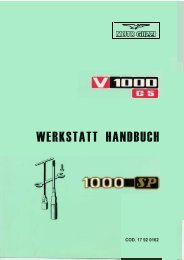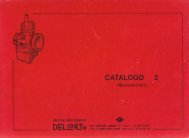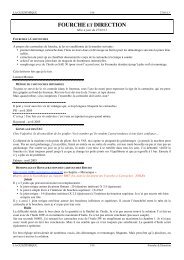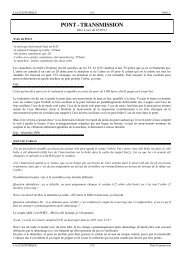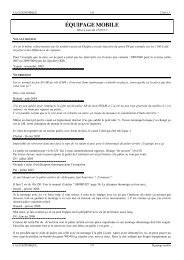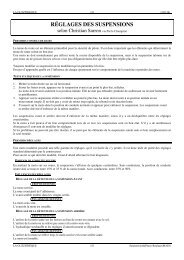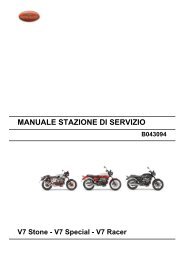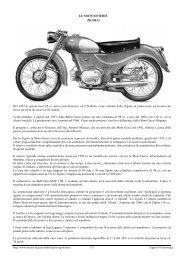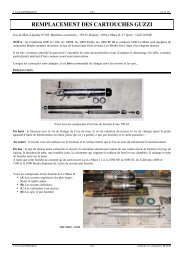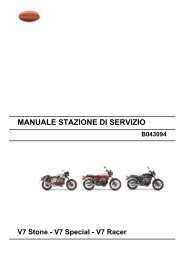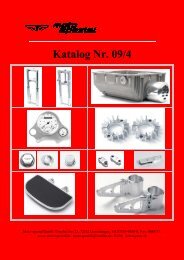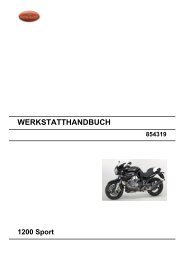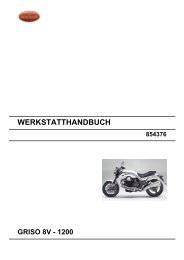Carburateurs Dell'Orto - Guide technique
Carburateurs Dell'Orto - Guide technique
Carburateurs Dell'Orto - Guide technique
You also want an ePaper? Increase the reach of your titles
YUMPU automatically turns print PDFs into web optimized ePapers that Google loves.
On the right, the main components of a<br />
<strong>Dell'Orto</strong> motorcycle carburetor are shown:<br />
1. starting lever; 2. air intake; 3. venturi; 4.<br />
starter jet; 5. float chamber; 6. atomizer; 7. fuel<br />
valve; 8. needle; 9. throttle valve; 10. float<br />
chamber air intake; II. fuel connection; 12. Idle<br />
mixture adjusting screw; 13. throttle valve adju-<br />
sting screw; 14. float; 15. idle emulsion tube,<br />
16.idle jet; 17. main jet.<br />
This is a diagram of the gasoline delivery in the<br />
inducted airflow: the fuel inside the float cham-<br />
ber rises in the atomizer (31), going through the<br />
jet (32) which adjusts the delivery together with<br />
the needle (28); the liquid is emulsified first<br />
with the air arriving from the channel (13) insi-<br />
de the nozzle (30) then going into the venturi<br />
(29) it mixes with the air coming from the in-<br />
take (1).<br />
basic functions:<br />
1. to control the power delivered<br />
by the engine, adjusting the<br />
airflow inducted according to<br />
driver demand.<br />
2. to meter the fuel flow into<br />
the inducted air stream, while<br />
keeping the air/fuel ratio in the<br />
optimum range over the engine's<br />
entire working range.<br />
3. to homogenize the air and<br />
fuel mixture in order to make<br />
the ignition and combustion<br />
proceed properly.<br />
THE MIXTURE RATIO<br />
The air/fuel ratio (A/F) is the ratio<br />
between the air and fuel mass inducted<br />
by the engine. It is defined<br />
as:<br />
A/F = M air/M fuel<br />
If we consider this ratio from a chemical<br />
point of view, the value of the<br />
stoichiometric A/F ratio is the one<br />
that allows complete combustion,<br />
without<br />
leaving either excess air (lean mixtures)<br />
or unburned fuel (rich mixtures)<br />
Stoichiometric A/F<br />
The stoichiometric A/F ratio depends<br />
on the fuel type. For commercial<br />
gasoline this varies from about<br />
14.5 to 14.8, meaning that 14.5-<br />
14.8 pounds of air are needed for<br />
the complete combustion of 1<br />
2



